Highlights and access methods of Todaiji Temple (Nara Prefecture)
English | Japanese
Todaiji Temple is the head temple of the Kegon sect located in Nara City, Nara Prefecture. It is famous for its Great Buddha of Nara. Founded during the Nara period under the auspices of Emperor Shomu, the Daibutsu-den was completed in 751. The consecration ceremony for the Daibutsu was held the following year. Popular attractions include the Daibutsu-den, which is one of the largest wooden structures in the world, and the Nigatsu-do, a national treasure. Todaiji Temple is registered as a UNESCO World Heritage Site and is part of the Historic Monuments of Ancient Nara.
In this article, we will explain the attractions of Todaiji Temple in Nara Prefecture and how to access it for those who are traveling to Japan from overseas.
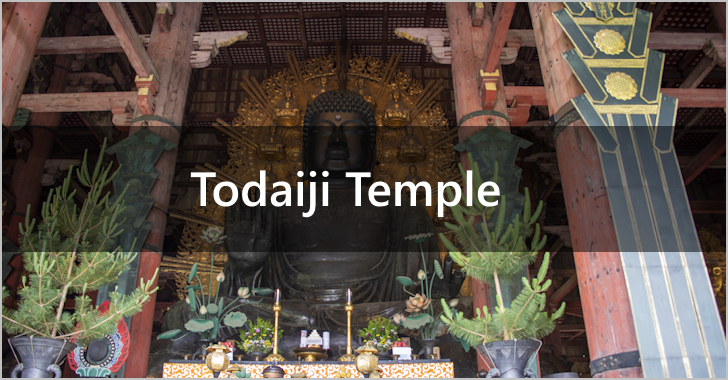
(Last modified: )
(Prefecture : Nara , Category : Temples)
Table of contents
Highlights of Todaiji Temple
We will introduce the highlights of Todaiji Temple.
Nandai-mon
The Nandai-mon is the main gate of Todai-ji. It is designated as a national treasure. After being destroyed once by a typhoon, it was rebuilt in 1199 during the Kamakura period. The Nandai-mon houses the Kongo Rikishi statues, which are also designated as national treasures. These statues, standing at 8.4m tall, were sculpted by Unkei and Kaikei in 1205.
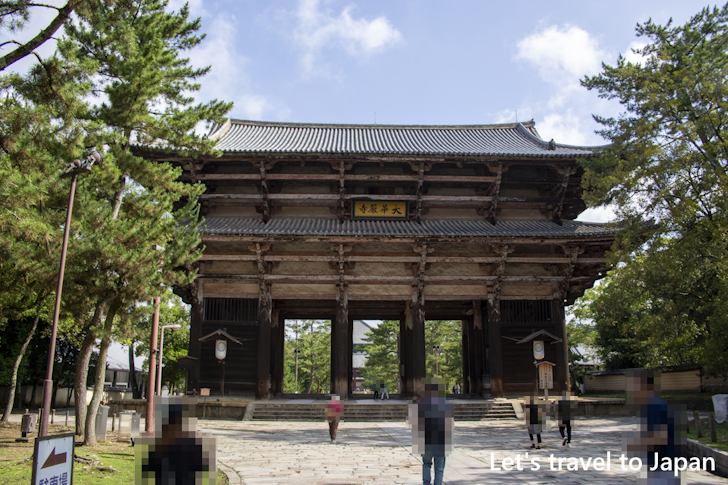
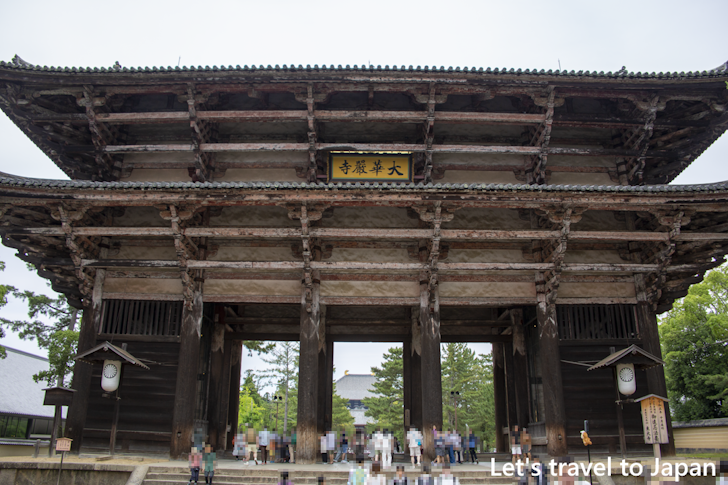
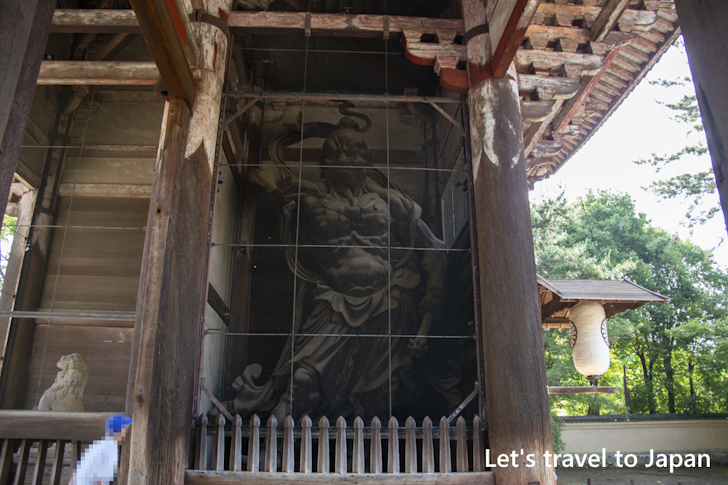
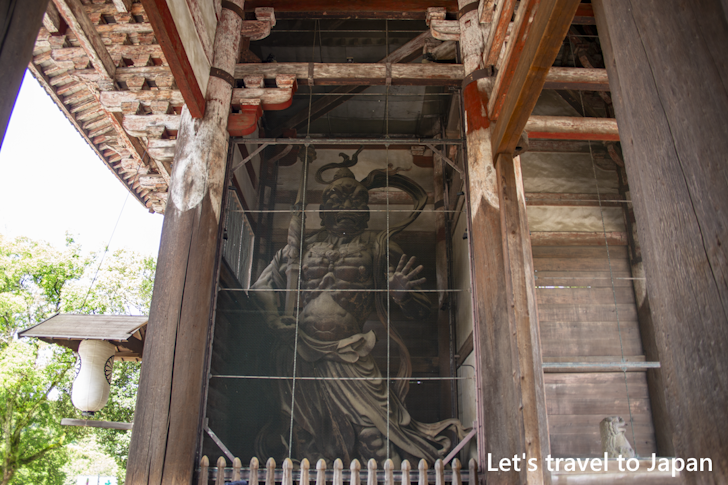
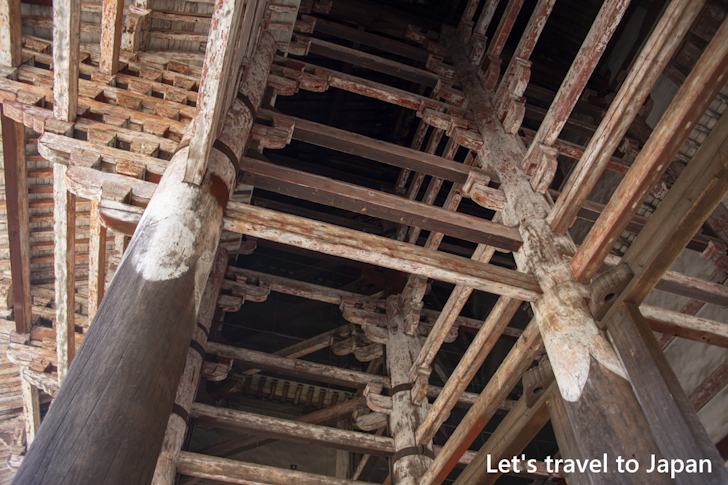
Daibutsu-den
The Daibutsu-den is the main hall of Todai-ji and is designated as a national treasure. It is one of the largest wooden structures in the world, measuring 57m in width, 50m in depth, and 48m in height. After being destroyed twice by fire, the current Daibutsu-den was rebuilt in 1709 during the Edo period. Due to financial difficulties at the time, its width was reduced from 88m to the current 57m.
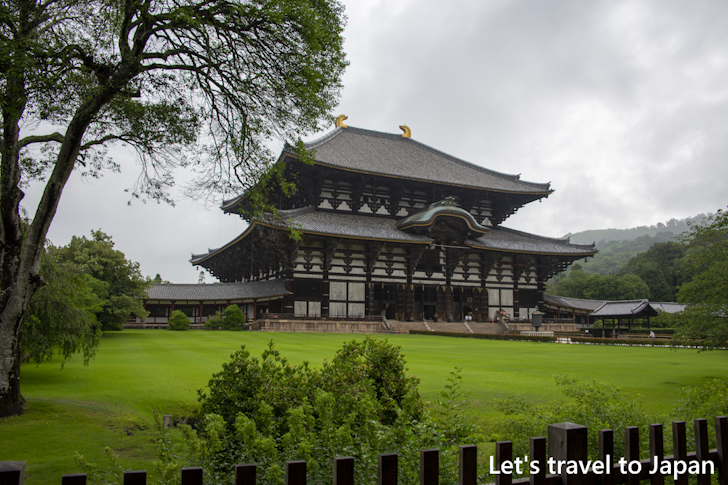
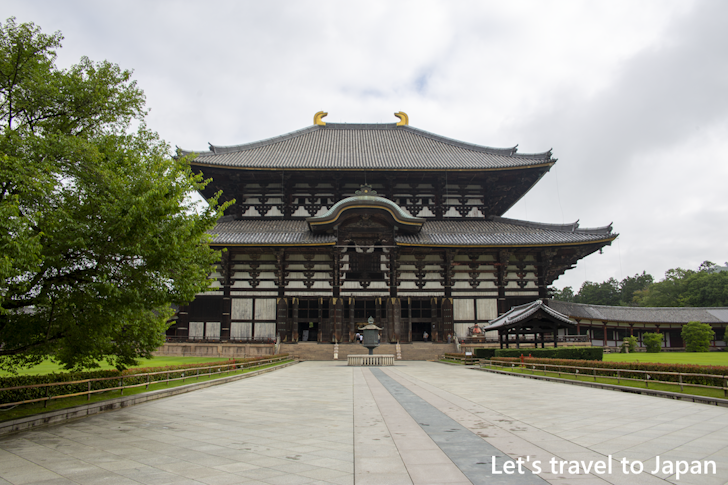
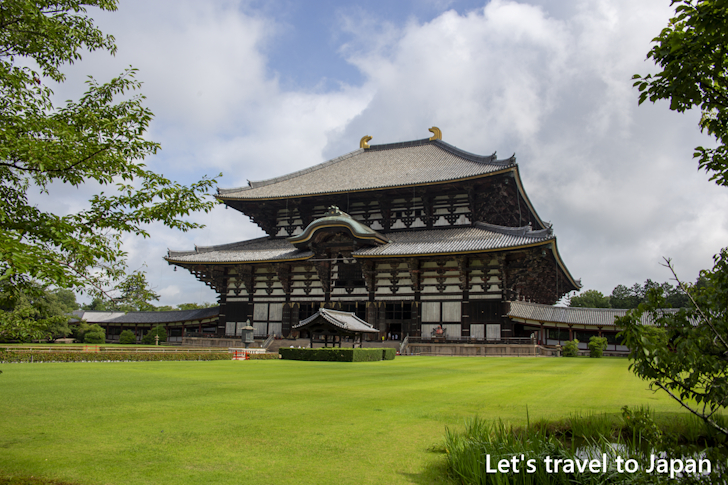
Additionally, the front of the Daibutsu-den features a small door called the Kansou-mado. Normally, this door remains closed, but on New Year's morning and the night of August 15th, the Kanso-mado is opened, allowing visitors to see the face of the Great Buddha from outside the hall.
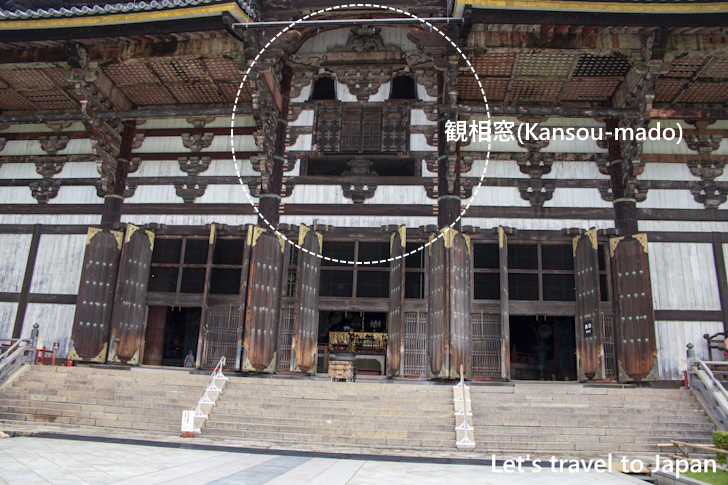
Octagonal Lantern
The octagonal lantern in front of the Daibutsu-den has remained intact since the original construction of Todai-ji. It is designated as a national treasure. On the fire box door portion, a lion is engraved, while on the non-door section, the Onjou Bosatsu is carved in relief.
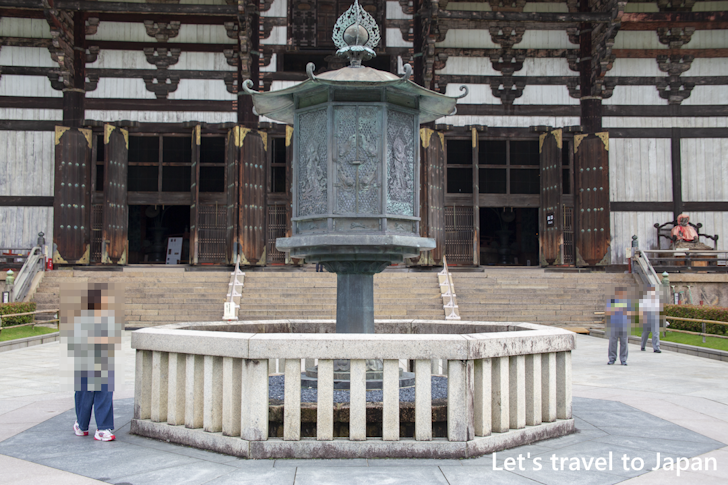
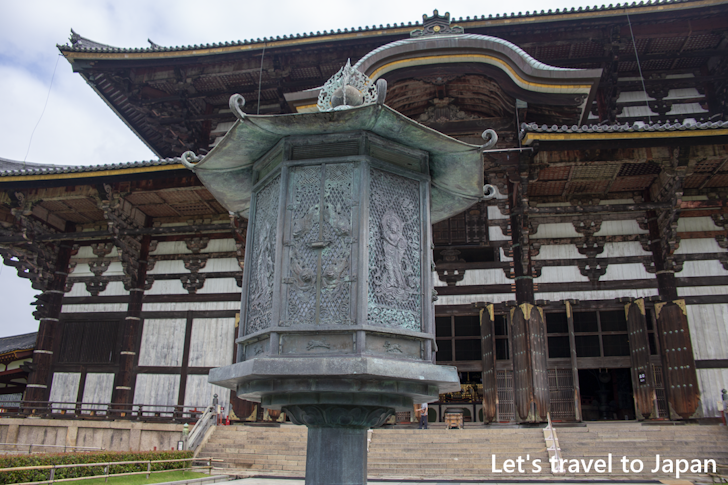
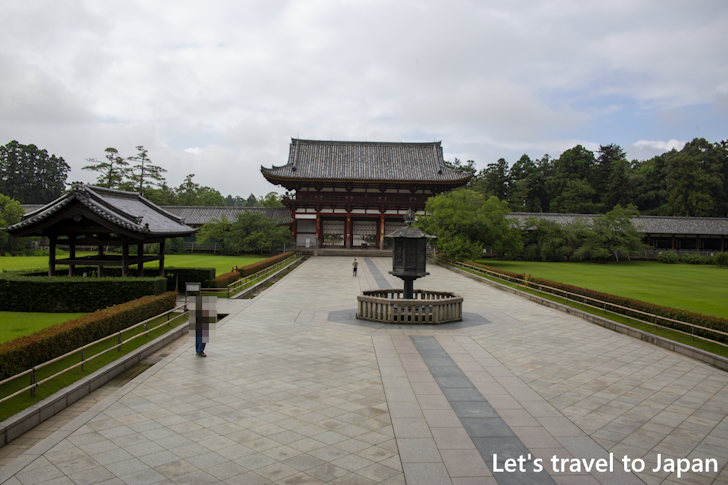
Vairocana Buddha(Daibutsu)
The Daibutsu of Todai-ji, affectionately known as "Nara's Great Buddha," is formally called the Vairocana Buddha. The statue stands at a height of 15 meters, equivalent to a 5-story building. Like the Daibutsu-den, it was destroyed by fire but was reconstructed during the Edo period, and its eye-opening ceremony was held in 1692.
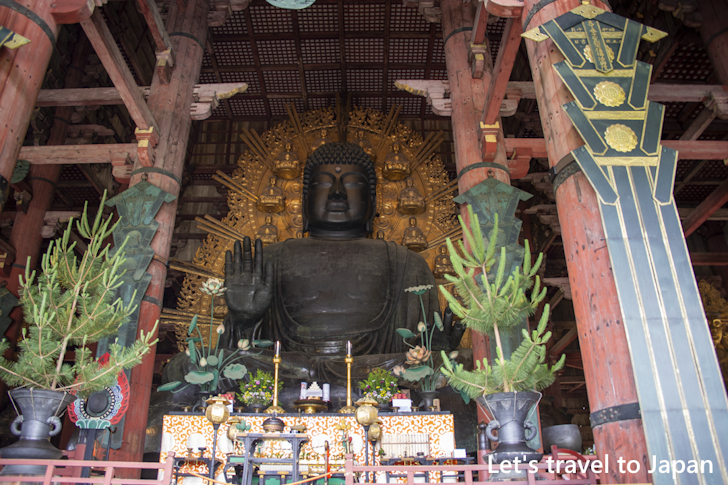
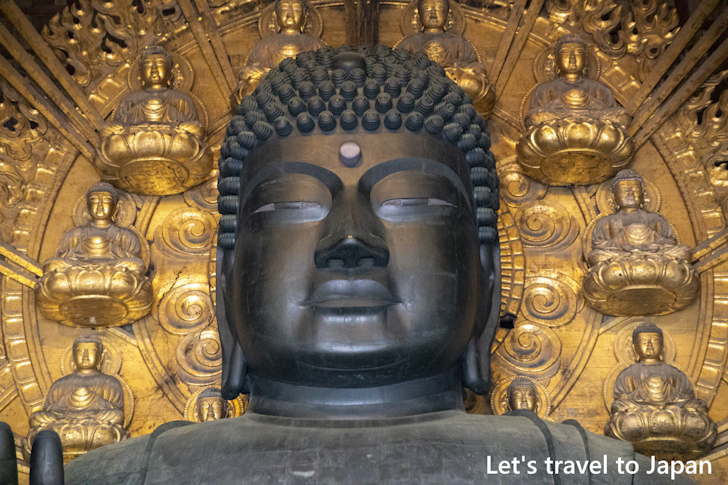
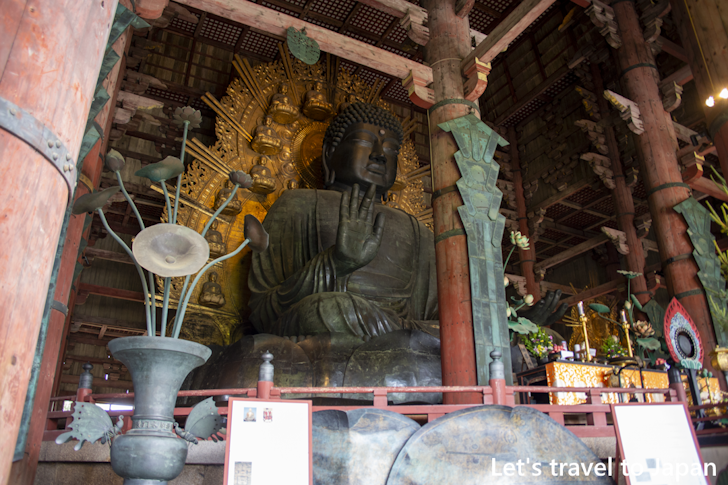
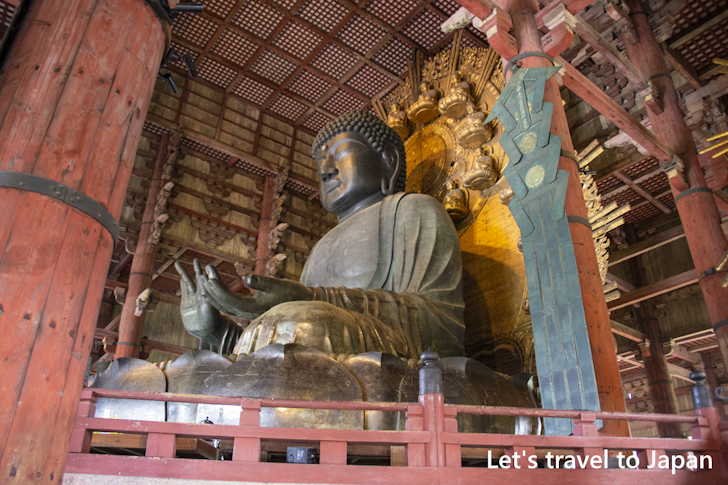
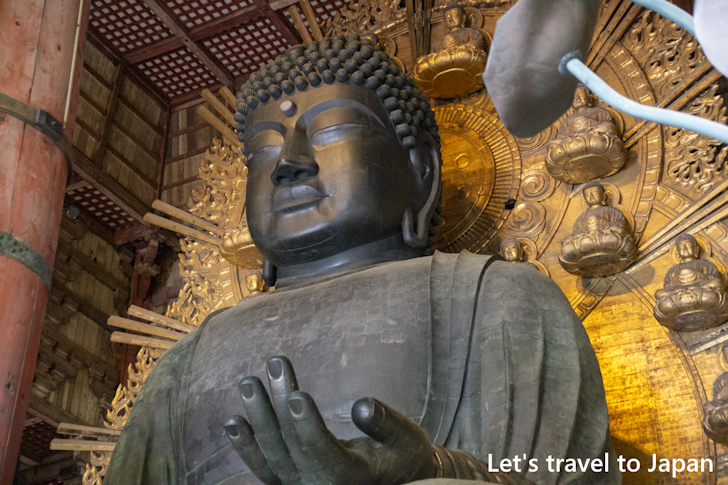
Kokuzo Bosatsu Seated Statue and Nyoirin Kannon Seated Statue
Flanking the Daibutsu are two attendant statues. To the left is the seated statue of Kokuzo Bosatsu, and to the right is the seated statue of Nyoirin Kannon. Both are about half the height of the Daibutsu at approximately 7 meters, but they still possess a significant presence. Both statues were created during the Edo period.
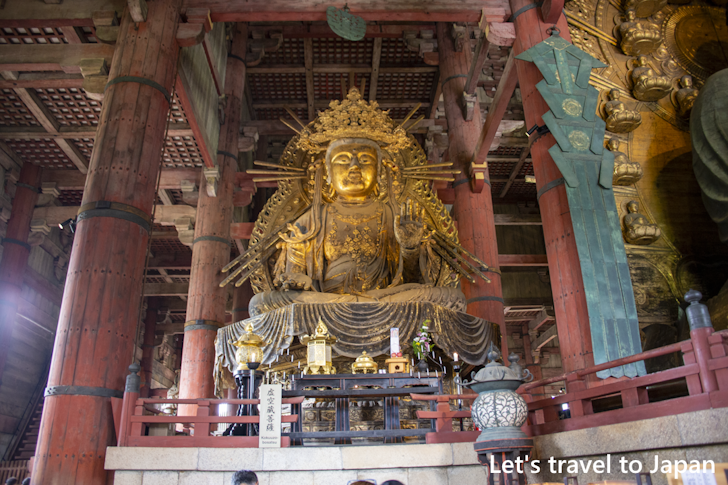
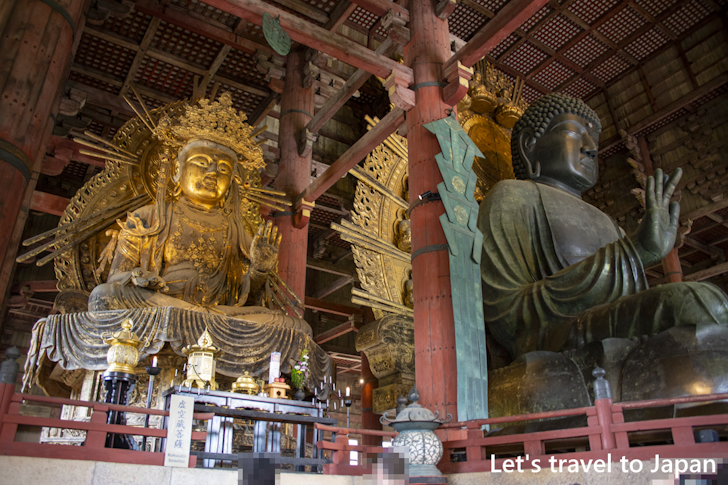
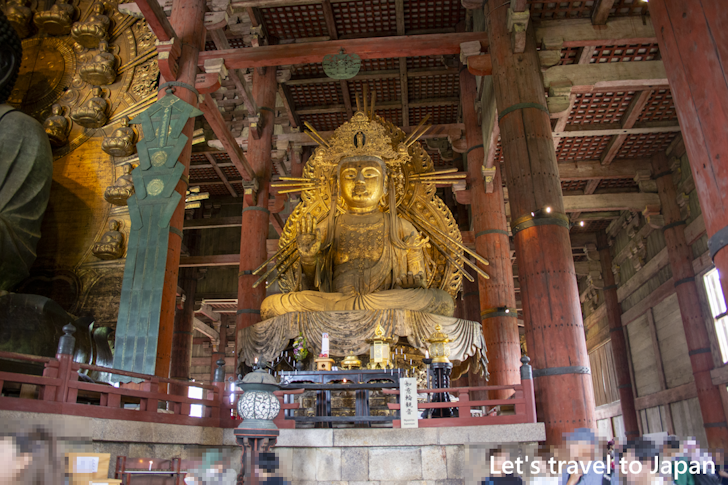
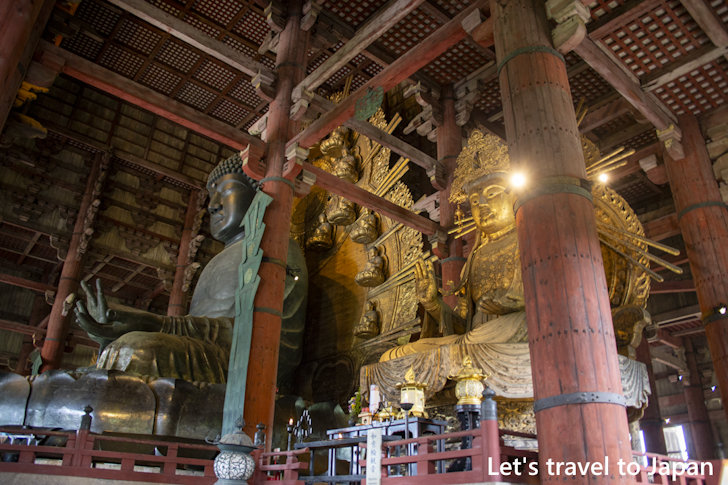
Shitenno Statue
Inside the Daibutsu-den, in the northwest corner, there is a statue of Koumokuten, and in the northeast corner, there is a statue of Tamonten. The exact height of the statues is not known, but they are so tall that one has to look up to see them in their entirety, and they are quite imposing.
Statue of Koumokuten:
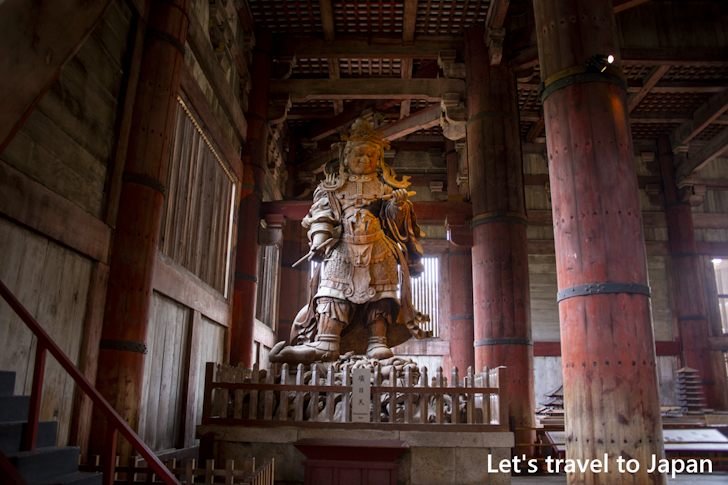
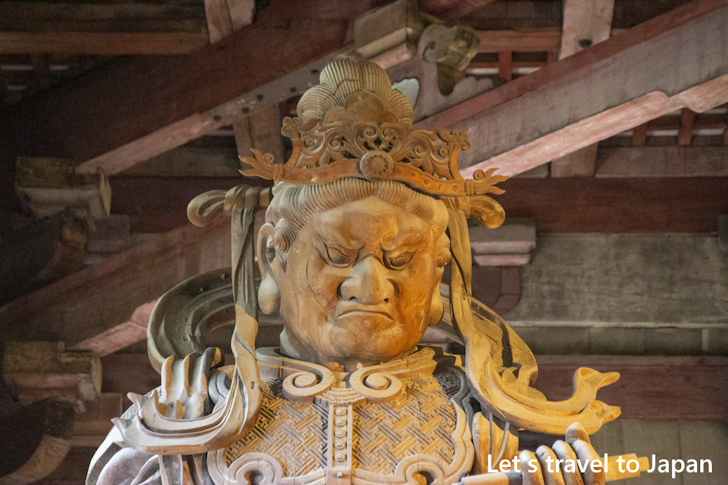
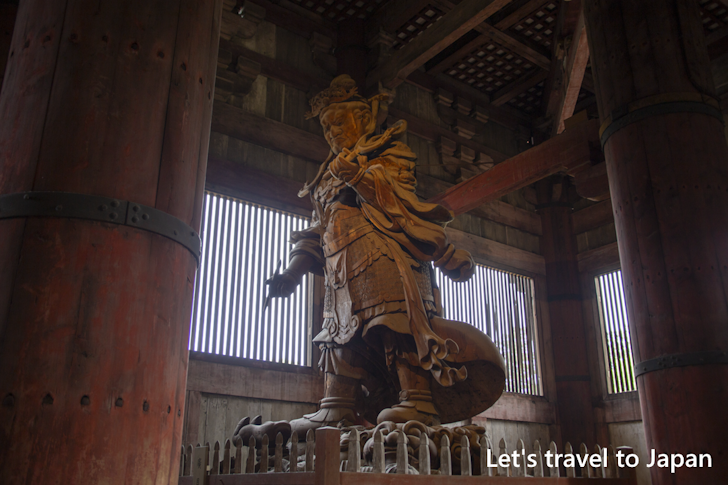
Statue of Tamonten:
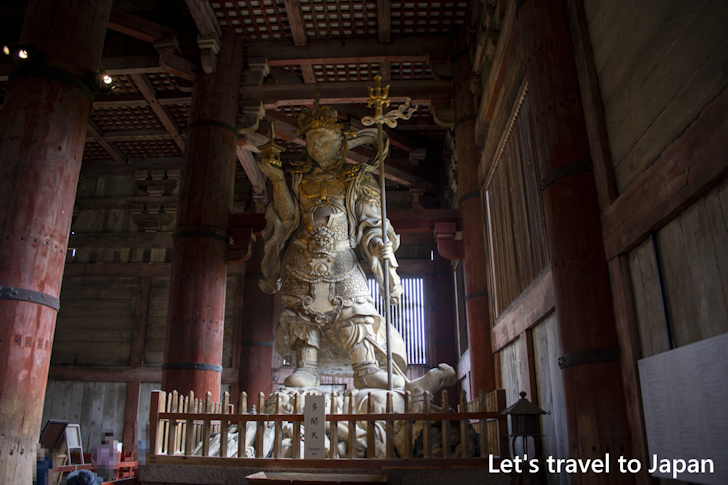
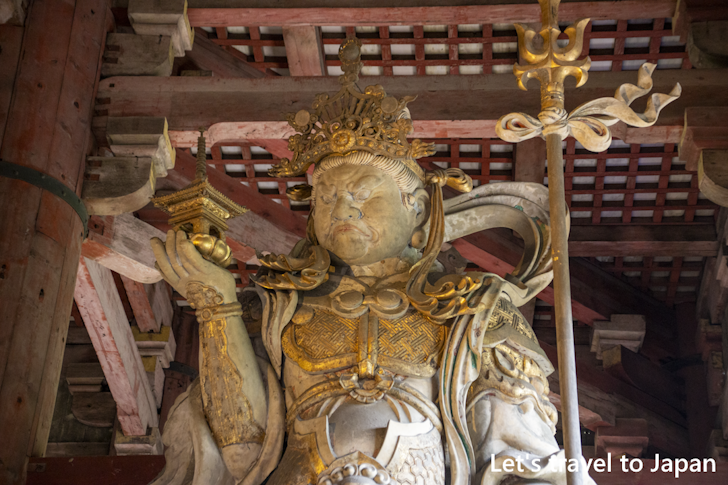
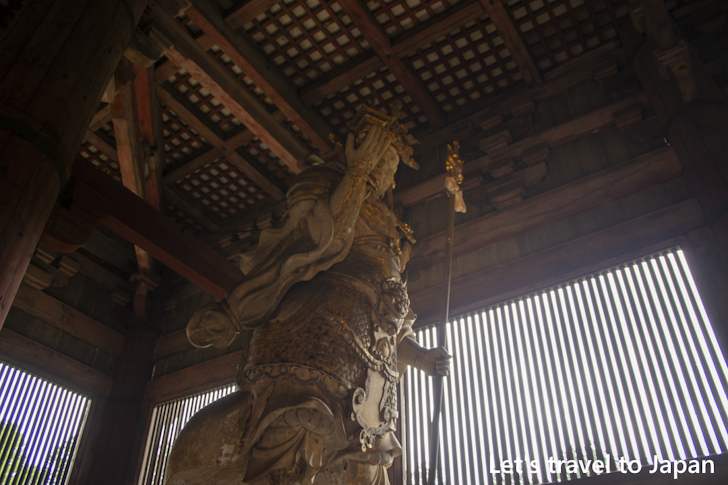
Among the Shitenno statues, the Zouchouten and Jikokuten statues are unfinished, with only their heads created and housed inside the Daibutsu-den.
Statue of Zouchouten Head:
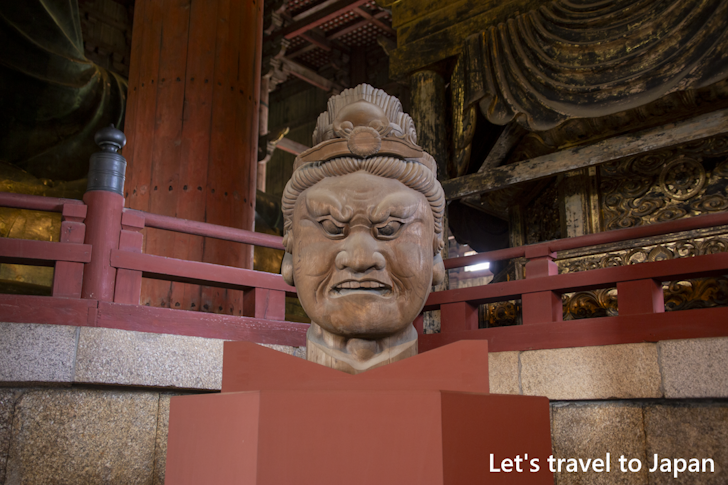
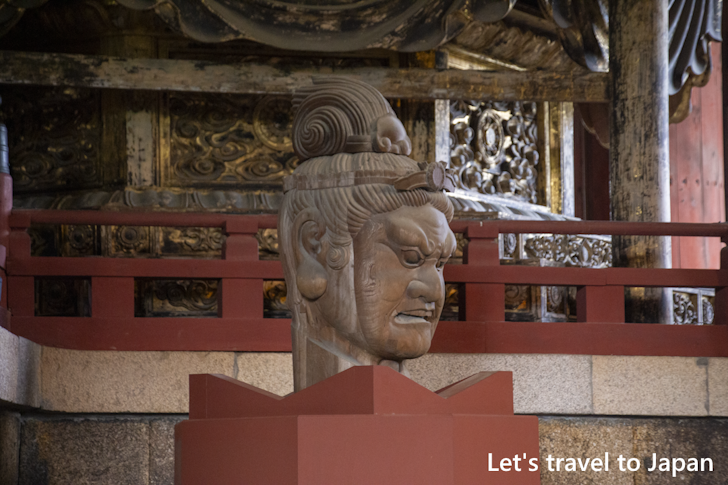
Statue of Jikokuten Head:
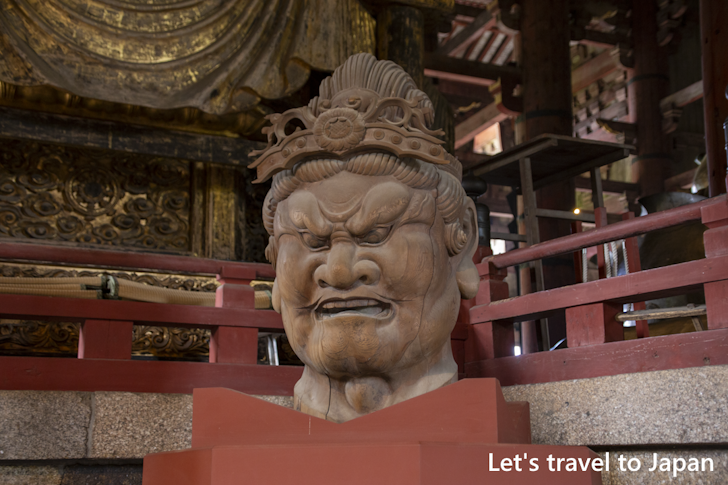
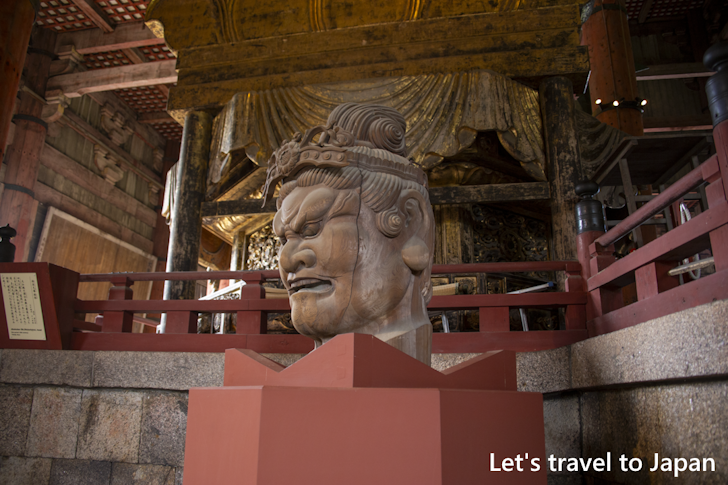
Squeezes Through The Hole
There is a large hole in one of the pillars inside the Daibutsu-den, allowing visitors to experience "squeezes through the hole". It's said that the size of this hole is the same as the nostril of the Daibutsu. Crawling through is believed to bring various blessings, but the hole is not that large, so it might be challenging for adult men to pass through.
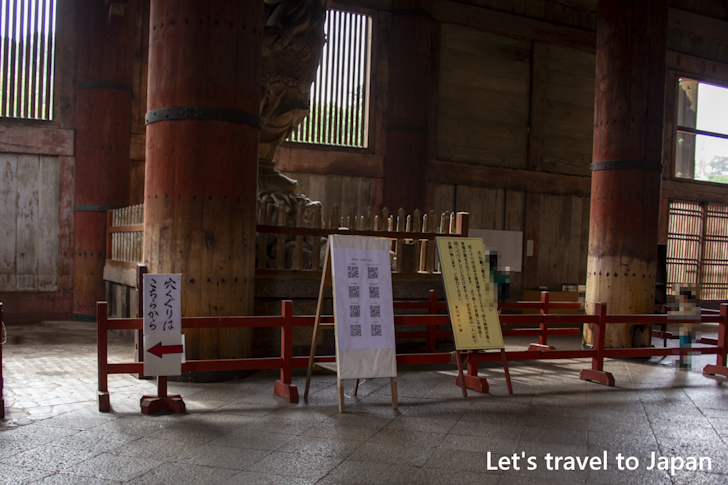
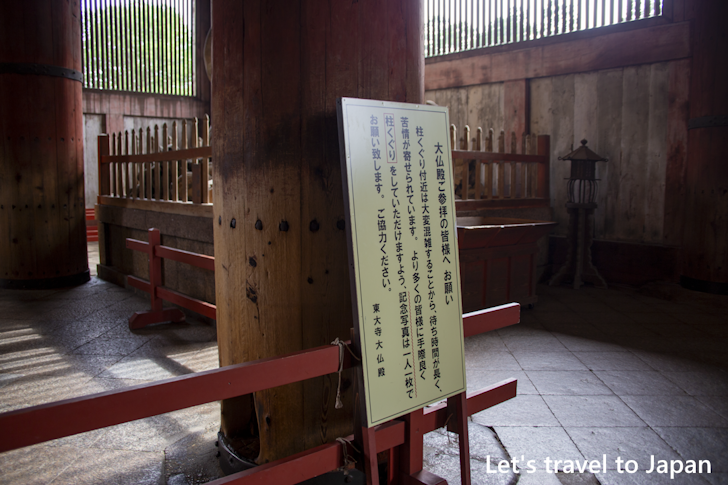
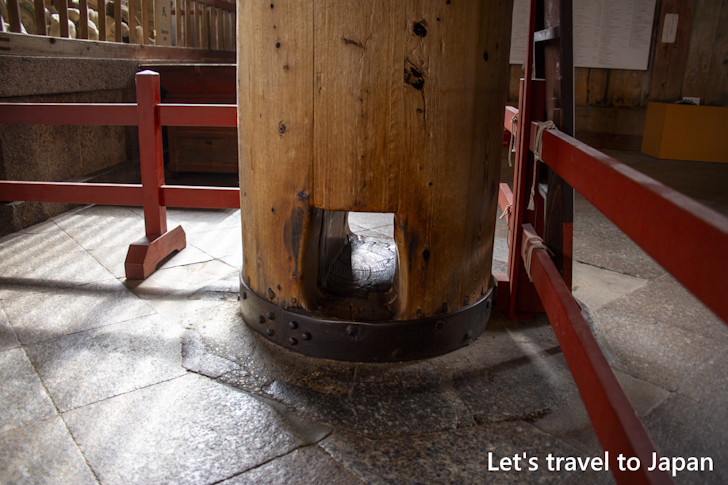
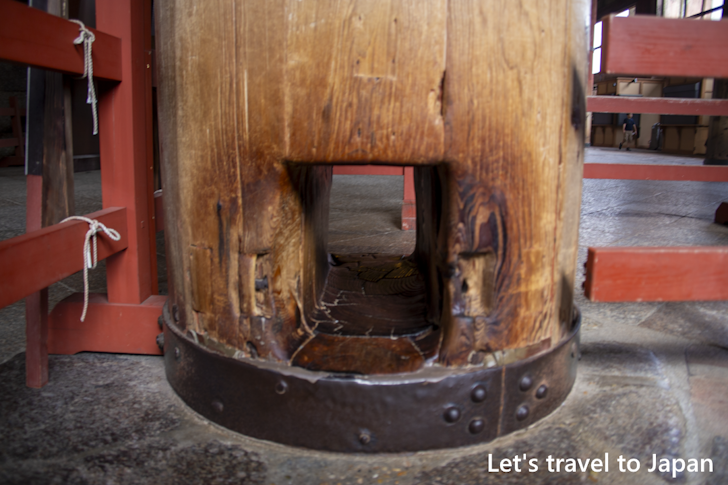
Shourou
On the slope leading from the Daibutsu-den to the Nigatsu-do, there's a massive Shourou(bell tower). The Shourou was rebuilt during the Kamakura period, but the Bonshou(temple bell), cast at the time of the founding of Todaiji Temple, still remains intact and weighs 26 tons. Both the Shourou and the Bonshou are designated as National Treasures, with the Bonshou being counted as one of the three most famous bells in Japan.
The bell is still rung daily at 8:00 pm. Additionally, on New Year's Eve, members of the public can also strike it, but only those who have received a numbered ticket are allowed.
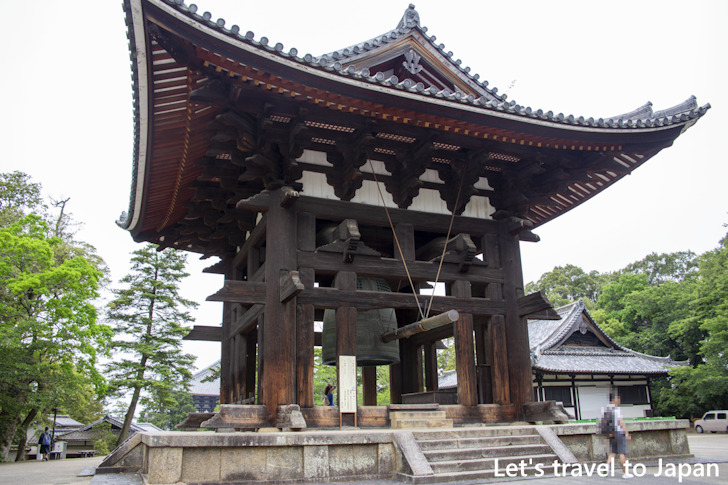
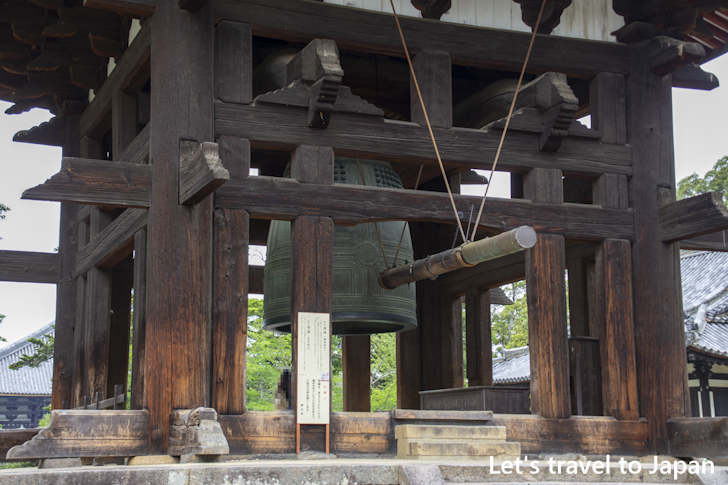
Nigatsu-do
Up the hill to the east of the Daibutsu-den lies the Nigatsu-do. The Nigatsu-do is known for hosting the ritual called "Omizutori (Shunie)." The name "Nigatsu-do" derives from the fact that the "Omizutori" ritual is performed in the old calendar's second month. Nigatsu-do is designated as a National Treasure.
Situated atop a small hill, the veranda of the Nigatsu-do offers a panoramic view of Todai-ji and its surrounding landscapes.
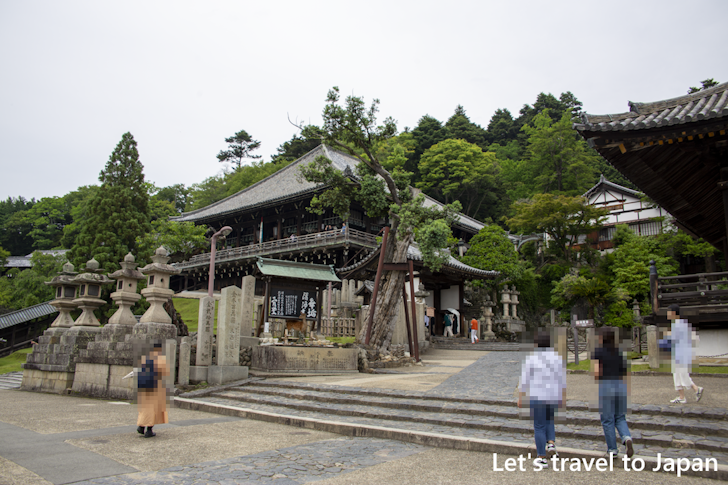
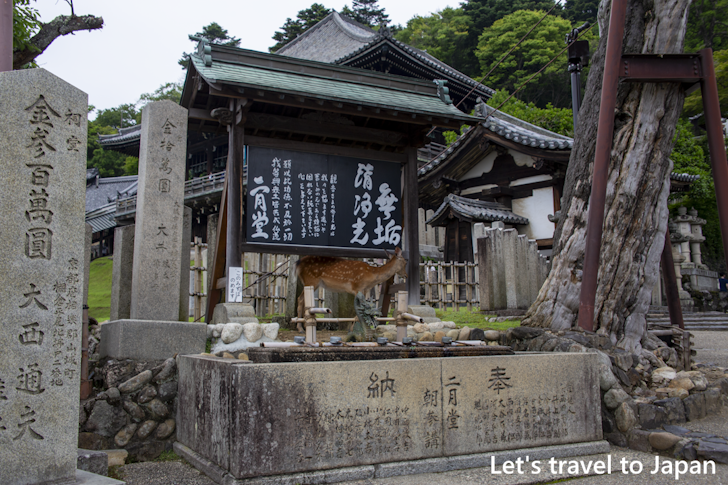
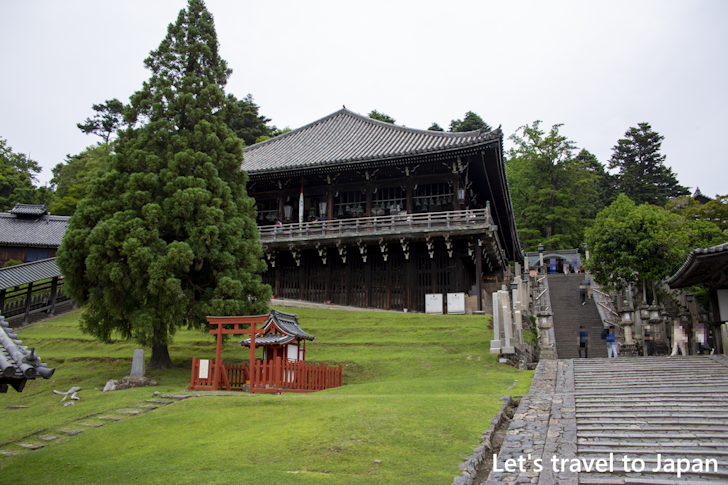
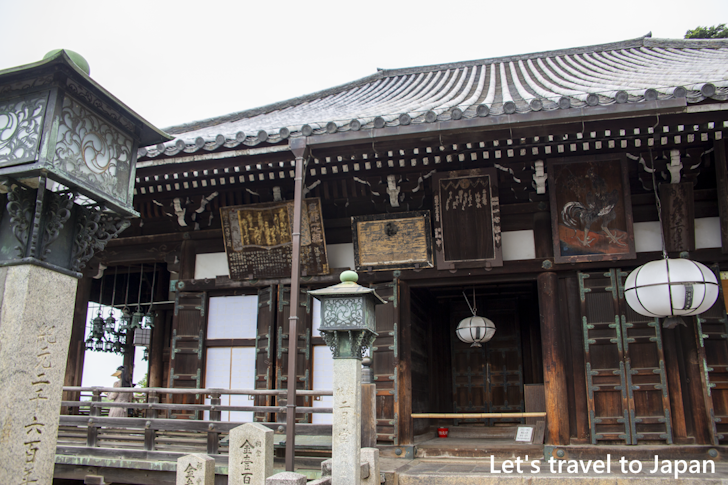
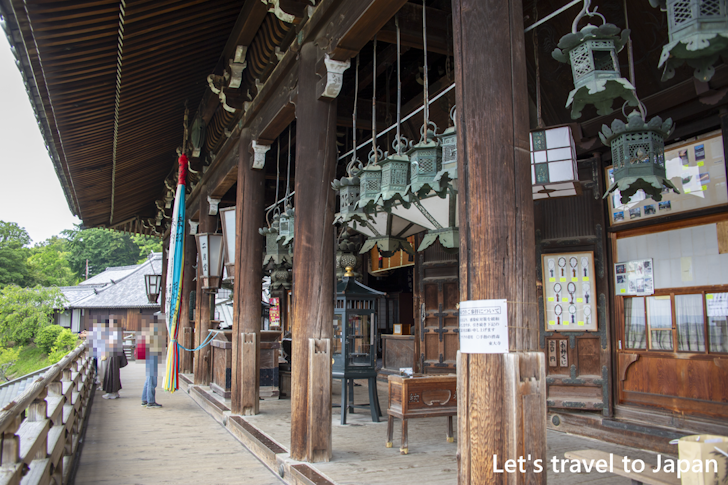
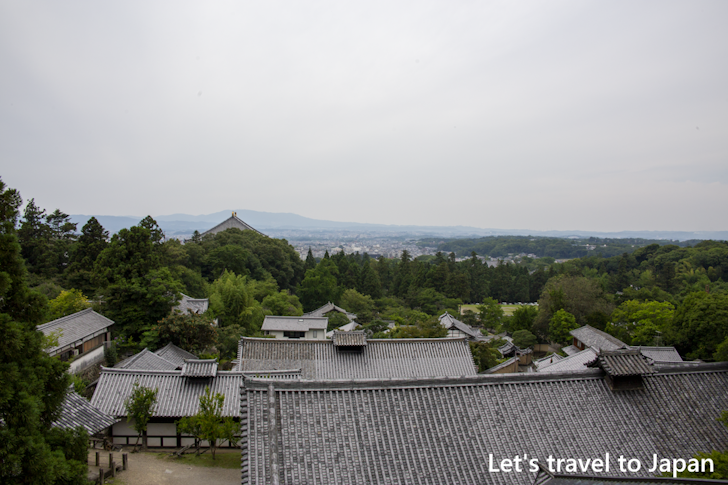
Hokke-do(Sangatsu-do)
The Hokke-do (commonly referred to as the Sangatsu-do) was constructed during the Nara period and stands as the oldest existing building within Todaiji Temple. It has been designated a National Treasure. The ten Buddha statues housed within the Hokke-do were also crafted during the Nara period, and all of them are designated as National Treasures.
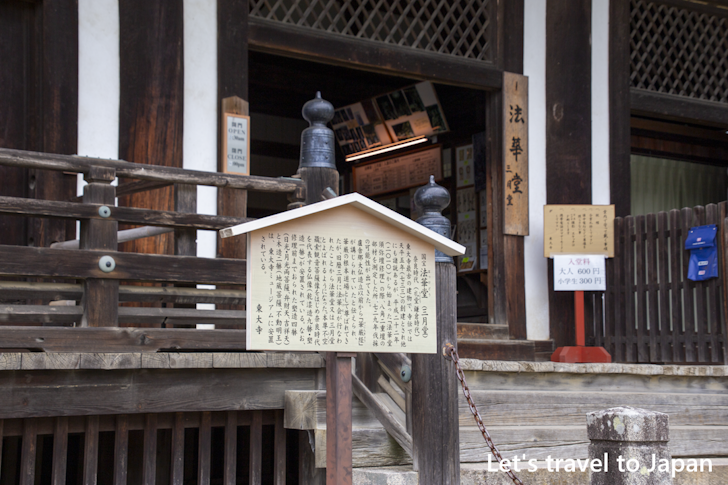
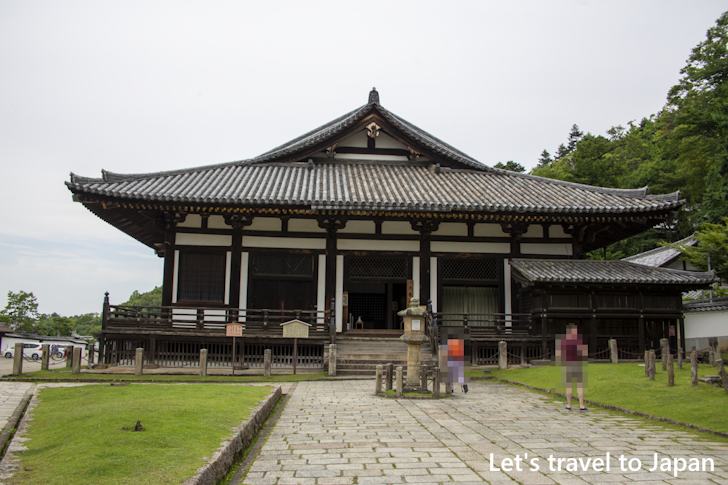
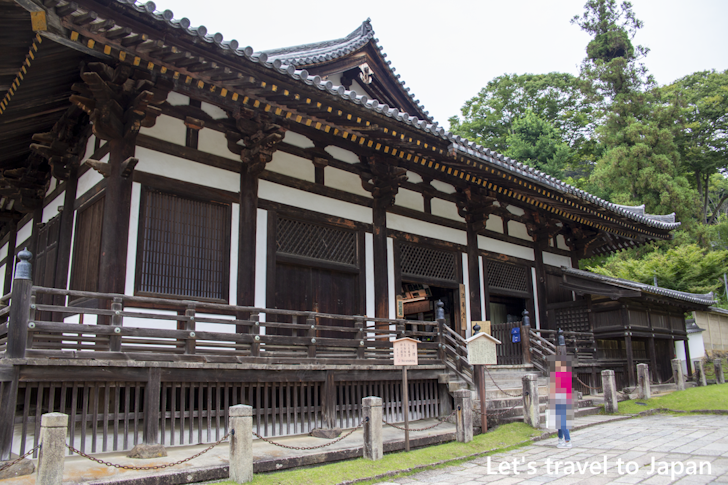
List of photos related to Todaiji Temple
Please see below for a list of photos related to Todaiji Temple.
Address and access method of Todaiji Temple
Address of Todaiji Temple
The address of Todaiji Temple is "406-1 Zoshicho, Nara City, Nara Prefecture".
Access method of Todaiji Temple
I will explain how to access Todaiji Temple from Kintetsu Nara Station or JR Nara Station.
Nara Kotsu City Loop Bus
4 minutes
Walking
5 minutes
Attractions near Todaiji Temple
Several notable attractions are located near Todaiji Temple:
Nara Park
A large, picturesque park surrounding Todai-ji, Nara Park is home to over 1,000 friendly deer, considered sacred and protected as national treasures. The park also features beautiful walking paths, ponds, and gardens, making it an ideal spot for leisurely strolls and picnics.
Kasuga Taisha Shrine
A UNESCO World Heritage Site, Kasuga Taisha is an ancient Shinto shrine known for its thousands of stone and bronze lanterns. The serene shrine grounds offer a peaceful atmosphere for exploration and reflection.
Kofuku-ji
Another UNESCO World Heritage Site, Kofuku-ji is a historic Buddhist temple with a five-story pagoda, the second tallest in Japan. The temple complex also features a treasure hall displaying important Buddhist statues and artwork.
Naramachi
A charming, preserved district in Nara with traditional wooden townhouses, narrow lanes, and small shops. Naramachi is perfect for experiencing the atmosphere of old Japan and offers a variety of cafes, museums, and souvenir shops.
Isui-en Garden
A beautiful traditional Japanese garden near Todai-ji, Isui-en Garden features ponds, stone arrangements, and seasonal flowers, offering a tranquil and picturesque retreat.
Other information about Todaiji Temple
Official site about Todaiji Temple :
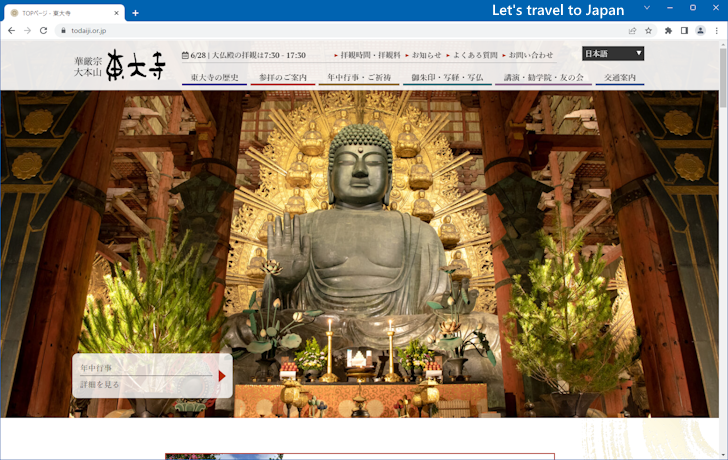
-- --
Thank you for reading to the end.
( Written by Tatsuo Ikura )